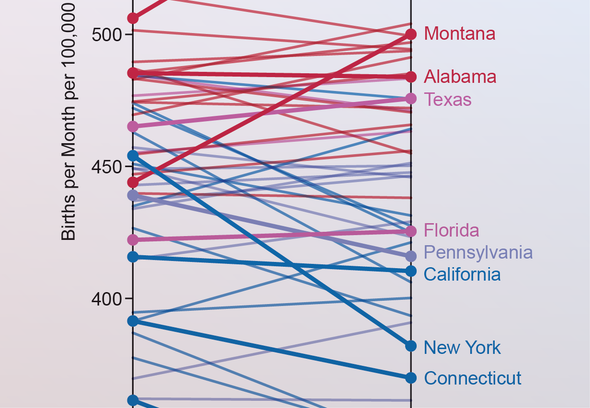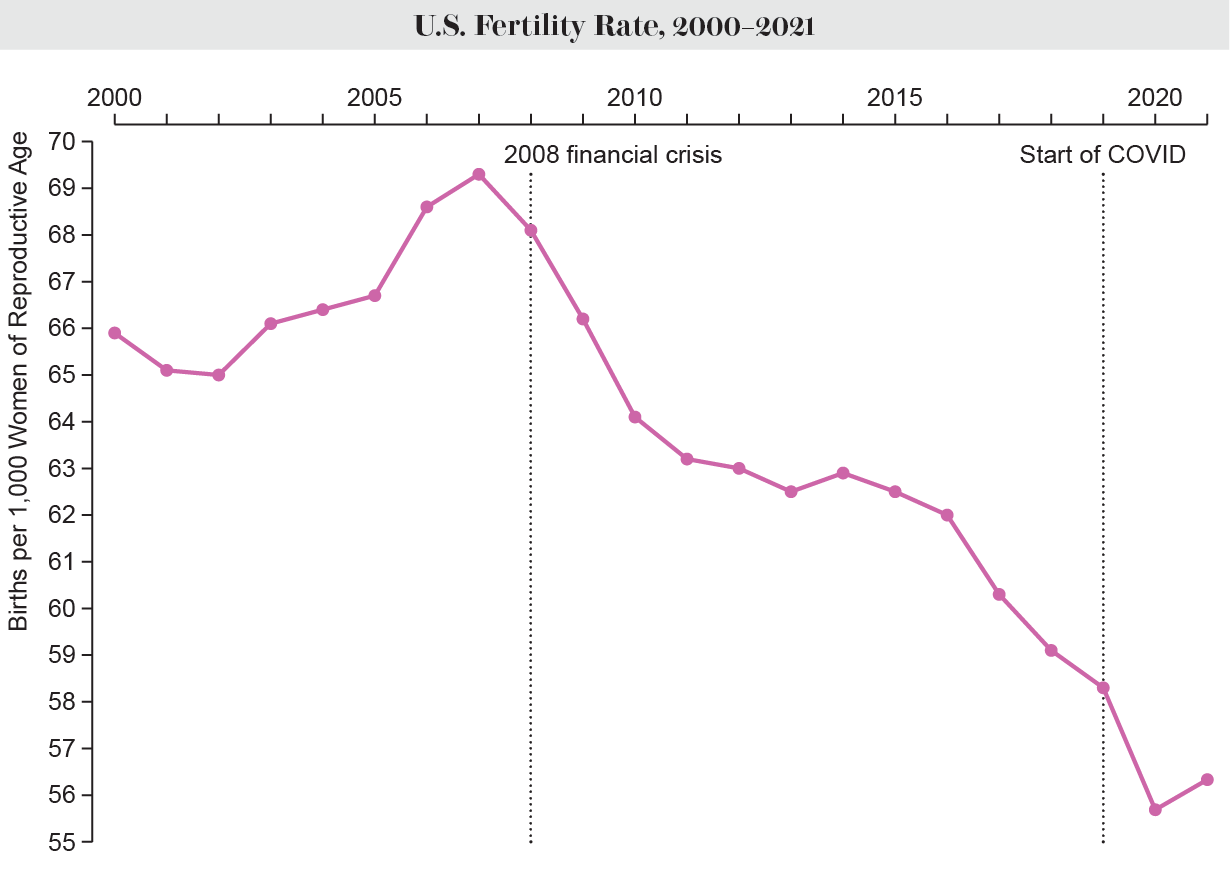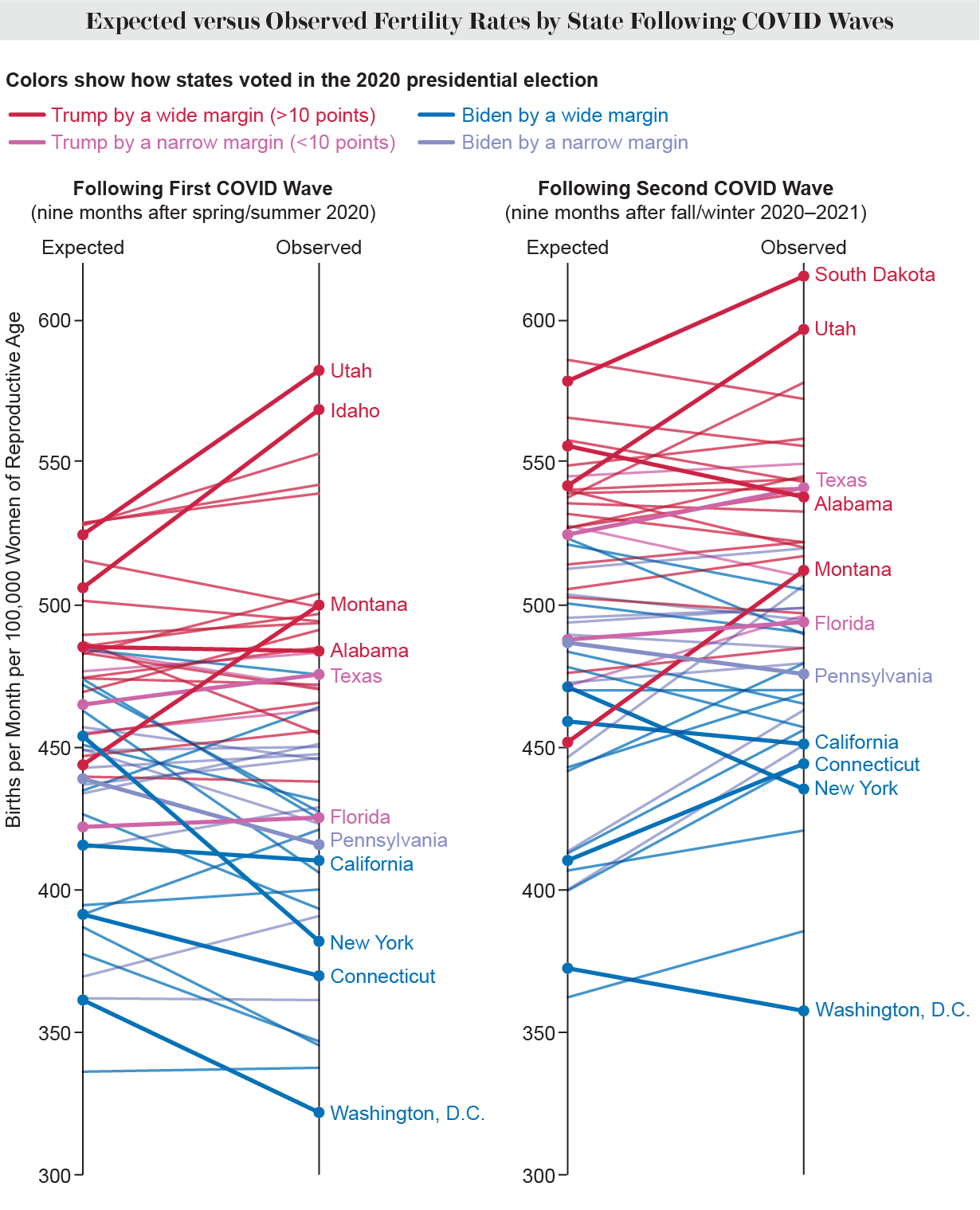The COVID pandemic caused a U.S.-wide decline in fertility rates, but red states actually saw increases
Thank you for reading this post, don't forget to subscribe!
The study, which was published in April in Human Reproduction, found that the U.S. fertility rate dropped by 17.5 births per month per 100,000 women of reproductive age after the pandemic’s first wave in early to mid-2020. It then returned to a prepandemic rate of decline following the second wave in the fall and winter of 2020. The states and regions that had the biggest declines in fertility were more likely to have a higher percentage of Democrats and nonwhite residents and more social distancing. In contrast, states with more Republicans, fewer nonwhite residents and less social distancing were more likely to experience fertility increases.

Throughout modern history, fertility has plummeted after economic emergencies such as the 1929 stock market crash and the 2008 recession. But fertility rates in the U.S. have been on a downward slope since slightly before 2008, and the decline matches a similar trend among other wealthy countries in Europe and parts of Asia.
“We’ve seen that there’s been this [prepandemic], over-time-declining trend in fertility rates. And we’ve also seen that fertility rates decline pretty steeply after emergencies, particularly economic ones,” says Sarah Adelman, a research associate in environmental pediatrics at NYU Langone Health. “COVID wasn’t just a biological pandemic. It was social; it was economic.” Her team wanted to know: What effect did this have on fertility rates?
Previous studies have shown that fertility rates dropped during the pandemic, but they didn’t really look at the differences across states. Adelman and her colleagues analyzed changes in fertility rates in all 50 states and Washington, D.C. during the pandemic’s first two waves. To do so, they used data from the U.S. Centers for Disease Control and Prevention, the 2020 U.S. Census and the University of Virginia’s Weldon Cooper Center for Public Service, which estimated state populations nine months after each COVID wave in 2021. (Nine months is the average length of a pregnancy.)
Whereas many states, such as New York and Connecticut, saw fertility rates decline during their first COVID waves in 2020, others, such as Utah and Idaho, saw them increase. In this study, fertility rate changes were not correlated with the severity of the COVID wave in a particular state. Instead, they were linked to the state’s political leaning: red states saw more fertility increases, whereas blue states saw more decreases. Fertility rates were also negatively correlated with the degree of social distancing, which was measured by cell phone GPS data analyzed by researchers at the University of Maryland. States with the largest fertility decreases also tended to have greater proportions of nonwhite residents.

The findings suggest that the degree to which states or regions took the virus “seriously” affected whether they were likely to see a drop or bump in fertility rate, Adelman says. In general, residents of Democratic-leaning states and Washington, D.C., tended to view COVID as a greater threat, whereas people in Republican-leaning states were less likely to see the disease as dangerous. In addition, blue states in the Northeast got hit hardest by the first COVID wave, so people in those states may have been more likely to treat it as a threat. These states also have a high proportion of people of color, a disproportionate number of whom lost their jobs and may have felt unable to care for more children, Adelman says. The study did not control for the effect of COVID infection itself on rates of live births, although the disease does pose a risk.
Philip Cohen, a professor of sociology at the University of Maryland, who was not involved in the study, says that the conclusion that the political climate and the response to the pandemic would affect fertility rates is “very reasonable” but that the interpretation is somewhat complicated. “I hesitate to put too much weight on the conclusion for a couple of reasons. One is, you know, births are relatively rare, and in the U.S., a fairly large percentage of births are not exactly planned.” So even if there was a change in fertility rate, it’s hard to know if that was because people intentionally chose to have fewer or more children. In addition, some U.S. states have a high percentage of babies born to people who reside outside the country but who travel here to give birth, so part of the drops in fertility rate may be that those individuals were unable to enter the U.S. because of pandemic lockdowns, Cohen says.
Adelman also notes that the study was somewhat underpowered because there were only 51 data points (50 states and Washington, D.C.), which limits the conclusions that can be drawn from it.
Nevertheless, the data suggest that in states with declines, fertility rates did bounce back somewhat after the second COVID wave. The arrival of effective COVID vaccines and a general loosening of pandemic restrictions may have contributed to this rebound as circumstances allowed people to consider expanding their families again, Adelman says.
McCleary and her husband are now discussing whether they might want to try to have a second child, but she doesn’t know if she can. “Right now we are looking at ‘Do we want to try for that second kid now that things are a little bit more reasonable?’” she says. “But I’m 40. It might be possible but not without significant intervention. So it may have just taken away our ability or choice to make that decision because we put it off.”
ABOUT THE AUTHOR(S)

Tanya Lewis is a senior editor covering health and medicine for Scientific American. Follow her on Twitter @tanyalewis314 Credit: Nick Higgins
